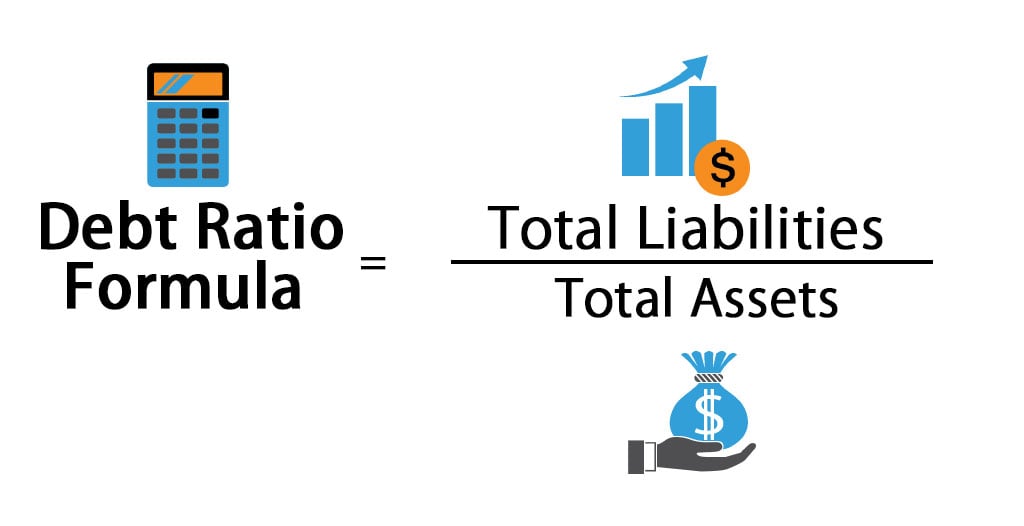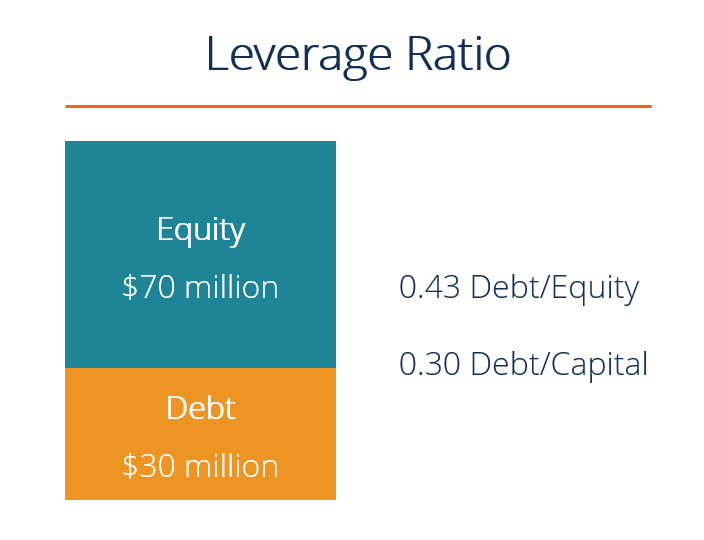The debt to equity ratio DE is calculated by dividing the total debt balance by the total equity balance as shown below. The debt ratio is a financial ratio that measures the extent of a companys leverage.
/Debtratio-final-467aac5bb30d46d8b9cd4f052fb2e858.png)
Debt Ratio Meaning Formula And Example
As a quick example if someones monthly income is 1000 and they spend 480 on debt each month their DTI ratio is 48.

. The trend shows that businesses are growing thanks. The higher the ratio the greater the degree of leverage and financial risk. Debt to Equity Ratio - What is it.
Adani Green Energy Ltd one of the seven listed units of Gautam Adanis ports-to-renewables empire has seen its debt-to-equity ratio balloon to the second-highest in Asia raising alarm over whether the billionaires aggressive expansion plans has over-leveraged his businesses. The Debt to Asset Ratio also known as the debt ratio is a leverage ratio that indicates the percentage of assets that are being financed with debt. For commercial lenders the debt service coverage ratio or DSCR is the single-most significant element to take into consideration when analyzing the level of risk attached to an investment property or business.
What is a debt-to-income ratio. The debt-to-equity ratio is one of the most commonly used leverage ratios. If a company have a Debt Ratio greater than 050 then the company is called a Leveraged Company.
Pricesales ratio PS ratio or PSR is a valuation metric for stocksIt is calculated by dividing the companys market capitalization by the revenue in the most recent year. When companies are scaling they need money to launch products hire employees assist customers and expand operationsThis sentiment is true now more than ever with the collective US. A Debt Ratio Analysis is defined as an expression of the relationship between a companys total debt and its assets.
A debt ratio is a. DebtEquity DE Ratio calculated by dividing a companys total liabilities by its stockholders equity is a debt ratio used to measure a companys financial leverage. The ratio reveals the relative proportions of debt and equity financing that a business employs.
In Year 1 for instance the DE ratio comes out to 07x. For example a company. If they had no debt their ratio is 0.
The debt ratio is defined as the ratio of total debt to total assets expressed as a decimal or. By calculating a DSCR a lender will be able to determine whether the net income generated by a property or business will comfortably cover loan repayments including. Government Debt to GDP in Pakistan averaged 7122 percent of GDP from 1994 until 2021 reaching an all time high of 88 percent of GDP in 2020 and a record low of 5640 percent of GDP in 2007.
It indicates what proportion of a companys financing consists of debts. It is closely monitored by lenders and creditors since it can provide early warning that an organization is so overwhelmed by debt that it is unable to. In general a lower ratio is better.
This page provides - Pakistan Government Debt To GDP - actual. Debt to Equity Ratio Formula Example. If XYZs industry average is 40 then XYZ is less leveraged than most of its peers and creditors will likely offer XYZ lower interest rates since the company is.
And then from Year 1 to Year 5 the DE ratio increases each year until reaching 10x in the final projection. Using the World Economics GDP Database it is possible to. Or equivalently divide the per-share stock price by the per-share revenue.
For instance with the debt-to-equity ratio arguably the most prominent financial leverage equation you want your ratio to be below 10. There are two kinds of DTI ratios front-end and back-end which are typically shown as a percentage like 3643. The debt-to-GDP ratio is the ratio between a countrys government debt and its gross domestic product GDP.
If the company have a lower debt ratio then the company is called a Conservative company. Business debt to equity ratio amounting to 926 93 in Q1 of 2021. Also look at industry averages in order to make a comparison.
It is a measurement for the ability of a company to pay its debts. The debt-to-equity ratio is calculated by dividing total liabilities by shareholders equity or capital. It is the ratio of total debt long-term liabilities and total assets the sum of current assets fixed assets and other assets such as goodwill.
The debt ratio can be used as a measure of financial leverage. Debt to Equity ratio is also known as risk ratio and gearing ratio which defines how much bankruptcy risk a company is taking in the market. The Gujarat-based companys debt-to-equity ratio of 2021 is only behind Chinas.
The debt to equity ratio measures the riskiness of a companys financial structure by comparing its total debt to its total equity. A high debt to equity ratio means a higher risk of bankruptcy in case business is not able to perform as expected while a high debt payment obligation is still in there. This shows the company has more debt funding in its capital structure.
World Economics has upgraded each countrys GDP presenting it in Purchasing Power Parity terms with added estimates for the size of the informal economy and adjustments for out-of-date GDP base year data. Debt Ratio is a financial ratio that indicates the percentage of a companys assets that are provided via debt. This ratio measures how much debt a business has compared to its equity.
In most cases a particularly sound one will fall. This makes it a good way to check the companys long-term solvency. Debt ratio Total Debts Total Assets.
When looking at this ratio it is important to keep in mind capital expenditures and cash flows. A debt-to-income ratio is the percentage of gross monthly income that goes toward paying debts and is used by lenders to measure your ability to manage monthly payments and repay the money borrowed. Debt to Equity Ratio DE 120m 175m 07x.
YTDYTD Last Year 2395. The debt to asset ratio is commonly used by creditors to determine the amount of debt in a company the ability to. Sales Revenue QQ Last Year 007.
What is the Debt to Asset Ratio. Sales Revenue 5-Year Annual Average. Debt ratio Total Liabilities Total Assets.
Growing a business requires investment capital. Debt-to-income ratio DTI is the ratio of total debt payments divided by gross income before tax expressed as a percentage usually on either a monthly or annual basis. A ratio of 01 indicates that a business has virtually no debt relative to equity and a ratio of 10 means a companys debt and equity are equal.
Pakistan recorded a Government Debt to GDP of 84 percent of the countrys Gross Domestic Product in 2021. The justified PS ratio is calculated as the price-to-sales ratio based on the Gordon Growth Model.

Debt Ratio Formula Calculator With Excel Template

Back End Debt To Income Ratio Debt To Income Ratio Debt Ratio Debt

Leverage Ratios Debt Equity Debt Capital Debt Ebitda Examples

0 Comments